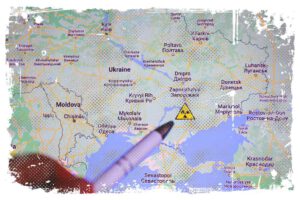It’s no secret that soldiers need to be in best physical shape. They need to be quick, strong, and able to endure difficult conditions. With this in mind, new regulations for physical fitness tests for professional soldiers have been put into place, starting in 2021.

Every year, each of over 100,000 professional soldiers in Poland must take a physical fitness test. These include marching/runing for 3 kilometers or swimming for 12 minutes, pull-ups on a bar or push-ups, crunches for two minutes and a run on the so-called envelope, which is interchangeable with a 10 x 10-meter shuttle run.
One of the main changes is that the test has been standardized for both men and women. This means that both genders will be held to the same physical standards. Additionally, the existing standards for the test for men have been raised, particularly in exercises that evaluate their motor abilities, such as endurance and abdominal muscle strength.
Overall, this is a positive move to ensure that all soldiers are physically prepared to handle the demands of their job. By the way – please check my other article in which I present soldier’s individual equipment.
↳ PRO TIP: Do you like traveling? Then before you buy any ticket or book an attraction, check if it's available in this worldwide Viator Database. You may save a lot of money and time. No need to thank me :)
What Is the Army Fitness Test Like?
The physical fitness qualification test for candidates for professional military service in Poland assesses the candidate’s speed, strength, and endurance. It consists of four exercises, with a minimum of three requiring a positive evaluation. The tests are conducted in May and June.
There is also an additional test held in September for those who were unable to take the test or did not pass it earlier. The requirement for taking the test is a positive medical opinion issued directly prior to the test.
The fitness test is always conducted in front of a commission, which consists of a chairman, deputy, members, and secretary. The range of exercises varies depending on gender, age, military units, and the physical and mental category of the candidate’s ability for professional military service.
The test is divided into eight age groups:
- Group I: up to 25 years old
- Group II: 26 to 30 years old
- Group III: 31 to 35 years old
- Group IV: 36 to 40 years old
- Group V: 41 to 45 years old
- Group VI: 46 to 50 years old
- Group VII: 51 to 55 years old
- Group VIII: above 55 years old
As a professional soldier in a certain category, one’s task is to complete the following exercises within one day.
Phase 1: Two Exercises, Out of Which the Soldier Picks One:
Exercise 1: 3,000-meter run
It takes place on an athletic track, a road, or a flat, hard surface. The candidates are gathered in a group of up to 30 soldiers, and at the command of “start” or other signal, they begin the run. The time is counted from the command to crossing the finish line, with an accuracy of 1 second.
Exercise 2: A 12-minute swim
It is performed on a 25- or 50-meter lane in an indoor or outdoor pool. The soldier is not allowed to use any swimming equipment except for swimming goggles. The goal is to cover the longest distance possible in 12 minutes using any style of swimming. The task starts with the command “start” and ends with “stop” after a dive into the water headfirst from a height of at least 50 cm or starting from the water.
Phase 2: Two Exercises, Out of Which the Soldier Picks One
Exercise 1: Pull-Ups on A Bar
A bar set at a height of at least 220 cm. After the command “ready,” the candidate performs a hanging grip with straight arms in the elbow. After the command “exercise,” the candidate performs pull-ups so that the chin is above the bar and then returns to the starting position, which is the straightened elbow. The evaluator counts the repetitions loudly and only counts the ones that are performed correctly.
Exercise 2: Push-Ups in a Supported Position
The soldier performs the exercise while lying face down on a bench with his legs together or slightly apart. The arms are placed shoulder-width apart. After the command “exercise,” the candidate performs classic push-ups so that the shoulder joints are below the elbow joints and then returns to the starting position. The jury counts the rounds loudly, but only the ones that are performed correctly.
Phase 3: Two Exercises, Out of Which the Soldier Picks One
Exercise 1: 10x10m Shuttle Run
This exercise requires using two flags that are at least 160 cm high, weigh up to 3.5 kg, and have a base diameter of no more than 30 cm. The candidate is dressed in sports clothes and at the command “start” or at the sound of a signal, the candidate begins to run towards the opposite flag, circles it, returns to the starting flag, circles it, and completes this course five times. Knocking over the flag causes the attempt to be repeated, which is the final attempt. The time is measured with an accuracy of 0.1 seconds, from the start signal to crossing the finish line.
Exercise 2: Zigzag Run
This exercise requires a surface on which a rectangle of 3 x 5 meters with angles ABCD and diagonals crossing at point E is drawn with chalk or paint. Arrows are drawn on the rectangle, indicating the direction of the run. Each point is marked with a flag with the same parameters as the flags used for the shuttle run. Then, on the command “start” or at the sound signal, the candidate starts running according to the marked route, passing the flags on the outside. The whole route is run three times. Knocking over the flag causes the attempt to be repeated, which is the last attempt.
Phase 4: 2-Minute Crunches
The candidate, dressed in sports attire, lies down on their back with their hands interlocked and placed behind their head. The arms should be touching the mattress, and the legs should be bent at the knees. The feet are separated and can be anchored to the ladder or immobilized by another person.
Once the candidate hears the command “start,” they begin to perform crunches, which involve leaning forward and touching their elbows to their knees, then returning to the starting position (touching the shoulders and interlocking hands to the mattress). The candidate must not lift their hips off the ground during the exercise. The entire exercise is controlled by the jury, which counts the correct repetitions aloud.
Grades and Scores
The evaluation of a professional soldier’s physical fitness is determined based on the scores of individual exercises obtained by the soldier during the physical fitness test, as follows:
- An average score of 4.51 or higher is considered “very good”;
- An average score of 3.51 to 4.50 is considered “good”;
- An average score of 2.51 to 3.50 is considered “sufficient”;
- An average score of 2.50 or lower is considered “insufficient”.
If a candidate for military service receives an insufficient score for the 3,000-meter march or 12-minute swim, they will receive an individual score for the test that is no higher than “sufficient.” A soldier who does not complete or participate in an exercise will receive an “insufficient” score for that exercise.
The requirement for receiving a positive score for the physical fitness test is for the person being tested to receive at least three positive scores from the exercises taken, regardless of category.
Bibliography
- https://www.wojsko-polskie.pl/sprawnosc-fizyczna/




